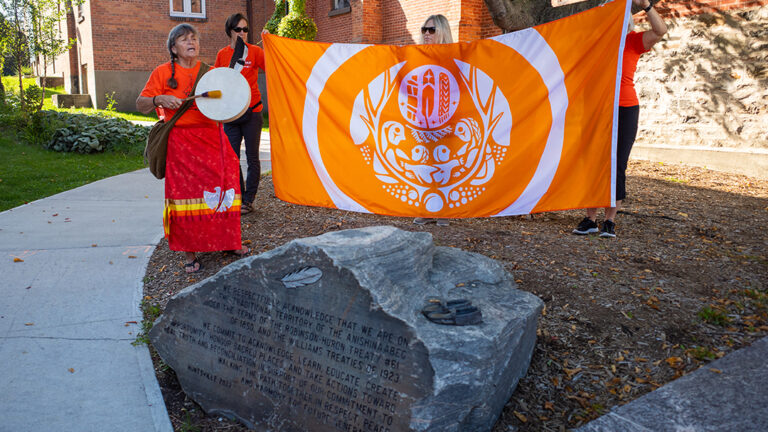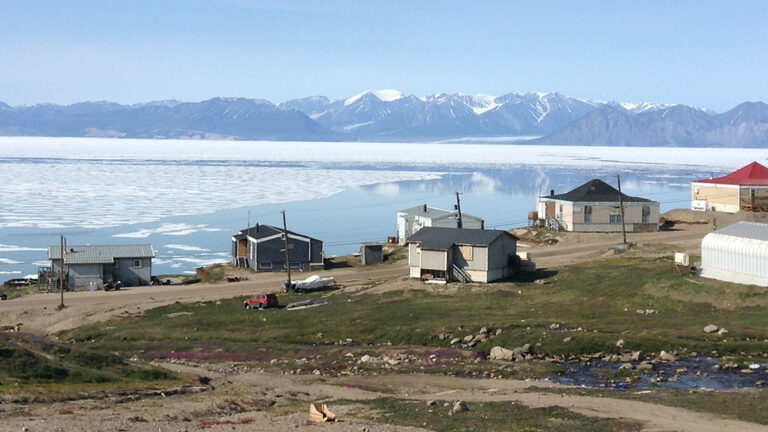The Community Housing Transformation Centre team has completed The Path, an Indigenous cultural awareness training that should be experienced by“Everyone in Canada.”
By Jeanne Lemba
The Community Housing Transformation Centre’s staff began 2022 with a renewed zeal to act on our organization’s commitment to Reconciliation with Indigenous Peoples. In our January newsletter, we invited other community housing providers, housing co-operatives or community-led organizations working with tenants to join us in learning about First Nations, Inuit and Métis Peoples and communities in Canada through an online Indigenous cultural awareness course.
Sponsored by the Canada Mortgage and Housing Corporation, and offered free of charge to eligible groups, The Path: Your Journey Through Indigenous Canada is designed by NVsion Insight, a majority Indigenous-owned company.
The training is more than a simple resolution: it is an opportunity to provide a meaningful contribution to the Truth and Reconciliation Commission’s call to action number 92, which calls upon businesses and organizations to provide, “education for management and staff on the history of Aboriginal peoples, including the history and legacy of residential schools, the United Nations Declaration on the Rights of Indigenous Peoples, Treaties and Aboriginal rights, Indigenous law, and Aboriginal—Crown relations.”
Jennifer David, senior consultant at NVision adds, “The first step of reconciliation is awareness. The Path is about topics that we should have learned in high school but never did.”
In March the Centre’s staff convened to exchange new learnings and discuss on how to move forward.
The heart of the matter
“Everyone in Canada should do this training, and it should be part of every single workplace, every school, you know, I feel like everyone should be doing this,” says Chrissy Diavatopoulos, program manager at the Centre.
The Path is divided into five modules, with each module addressing a distinct subject, for a total of four to five hours of learning to be completed at your own pace. It includes videos and quiz questions. To date, more than 100 groups of all types (federal and municipal government organizations, professional associations, private companies, etc.) across Canada have taken The Path.
The course begins with a topic that still confuses many non-Indigenous Canadians: in Module 1—What’s in a Name we are introduced to the origins and basic history of Indigenous peoples while demystifying the use of such terms as “Indian,” “Native,” and “Aboriginal.” Common stereotypes and myths are also addressed. This lays the groundwork for Module 2—Defining Moments in History that delves into pre-contact history with a look at different creation and origin stories of First Nations and Inuit, and an overview of Indigenous groups populating Canada prior to European contact.
This learning is a springboard to understanding the nature and basis for land claims across the North and major milestones in Inuit history. Lisa Ker, deputy executive director, was impressed, “I thought the Inuit content was excellent, very broad and far reaching, more than I had experienced in the past.”
The creation of the modern Nunavut, Nunavik, Nunatsiavut and the Inuvialuit regions are of particular interest.
Module 3—More Defining Moments in History covers the Indian Act, the legacy of residential schools, the Inuit relocations, the Sixties Scoop, and historical events that led to the Oka Crisis.
“I was unaware of the forced displacement of the Inuit communities. That was a new learning for me,” shares program manager Brian Clifford. A sentiment echoed by Scott Stager Piatkowski, program manager and former history major, who identified gaps in his education while contending that “the teaching of Canadian history has evolved for the better since I got my degree but even as somebody who tries to be aware of these issues, I did [deepen my knowledge].”
The module touches upon social movements such as Idle No More, the creation of the Truth and Reconciliation Commission, and the inquiry into Missing and Murdered Indigenous Women, while showcasing the resilience demonstrated by First Nations, Inuit and Métis peoples.
For Hope Jamieson and Chris Rootsaert, both program managers, it was Module 4—It’s the Law that proved most informative. It delineates the historical and legal framework underlying the current legal and constitutional relationship with Indigenous Peoples, as well as addressing modern-day treaties and historic and numbered treaties.
“I knew there were several treaties across Canada, but I didn’t realize their rollout and their different characteristics, [the difference between] unceded and treaty land. It was good to see that kind of breakdown,” says Rootsaert.
Jamieson found the black and white picture of a man standing atop a pile of bison skulls particularly jarring—a nod to the annihilation of bison by military and hunters. Describing it as “impactful,” Jamieson adds, “having that visual representation was so intense, it really opened my eyes.”
The Path ends with Module 5—Working With Indigenous Peoples. It explores relationship building, the ways cultural values and traditions shape Indigenous perspectives and views of contemporary Canadian society, while offering suggestions on how to work and communicate with Indigenous colleagues.
For some staff members, the best way forward is to think of this training as a springboard to Reconciliation with Indigenous Peoples, Ker adds, “There’s no lack of information out there, the Path is asking the reader to delve into it and if the reader does, great, but if they don’t, it’s a lost opportunity.”
Sector awareness
Our January call to action has spurred hundreds of applications: while many individuals and organizations have received free access to the training, the good news is that we still have spots available. If you’re a community-housing provider, housing co-operative or a community-led organization that works with tenants, we want to hear from you! Send us an email at Path@centre.support. Please specify how many employees or volunteers will take the course.
Priority will be given to small-to-medium organizations, but larger organizations are encouraged to communicate their interest, and we will evaluate need and capacity in relation to available space.



